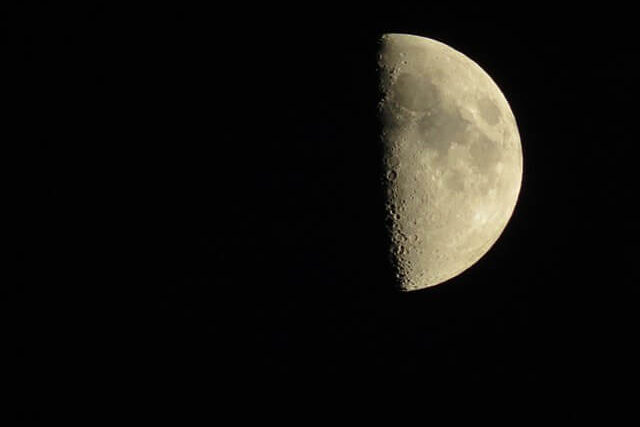
Mining the moon to fight climate change.
Researchers have proposed firing plumes of moon dust from a gun into space in order to deflect the sun’s rays away from Earth, giving advocates of the “moonshot” idea a new, very literal interpretation.
A new research paper describes the seemingly absurd idea of creating a “solar shield” in space by “ballistically eject[ing]” millions of tons of the moon’s dust to a point 1 million miles from Earth, where the floating grains would partially block sunlight.
“A really exciting part of our study was the realization that the natural lunar dust grains are just the right size and composition for efficiently scattering sunlight away from Earth,” said Ben Bromley, a theoretical astrophysicist at the University of Utah, who led the research, published in Plos Climate.
“Since it takes much less energy to launch these grains from the moon’s surface, as compared with an Earth launch, the ‘moonshot’ idea really stood out for us.”
The sun could be dimmed by as much as 2% if coal and sea salt were fired into space, according to Bromley and two other researchers. The team eventually settled on moon dust, but in order to maintain this solar shield, millions of tons would need to be mined, sifted, loaded into a ballistic device like an electromagnetic rail gun, and fired into space each year.
Bromley acknowledged that it would be a “significant project” to transport this mining and projective equipment to the moon. Additionally, it may be necessary to position a new space station in the L1 Lagrange point, which is located between Earth and the sun, in order to “redirect packets of dust on to orbits that could provide shade for as long as possible.”
According to Bromley, such an approach would be preferable to other solar geoengineering proposals because it would function as a “fine-tuned dimmer switch, leaving our planet untouched.” Other proposals have raised concerns regarding the environmental impact of spraying reflective particles into the atmosphere of the Earth.
To avoid a so-called “termination shock,” in which temporary cooling is abruptly stopped and the world is left to rapidly heat up, the moon dust would need to be continually launched into space. Bromley insisted that the primary objective of the research, which is to reduce emissions that cause global warming, cannot be accomplished without it.
“Nothing should distract us from reducing greenhouse gas emissions here on Earth,” he said. “Our strategy may just be a moonshot, but we should explore all possibilities, in case we need more time to do the work here at home.”
A controversial and still relatively fringe response to the climate crisis is to alter the world’s climate, including efforts to reflect sunlight. However, the US government launched a research project last year based on the idea, which has gained some traction despite repeated warnings that nations are not cutting emissions quickly enough to prevent disaster.
The moon dust proposal, according to UCLA environmental law expert Ted Parson, was a “fun, scientifically interesting speculation” that was unlikely to be implemented because of the higher cost and lack of control compared to Earth-based geoengineering options.
“There seems to be a bit of uptick of interest in space-based geoengineering schemes more broadly,” Parson said. “They were long dismissed as wildly impractical due to technical and cost considerations, but my impression is that the ongoing reduction of launch costs is piquing people’s interest and strange ideas are bubbling around.”
However, those who oppose solar geoengineering, whether on Earth or in space, contend that it serves as a pointless and potentially risky distraction from the urgent need to move away from using fossil fuels.
“The idea to mine the moon or near-Earth asteroids in order to artificially block parts of the sunlight is no solution to the ongoing and intensifying climate crisis,” said Frank Biermann, professor of global sustainability governance at Utrecht University.
“What is needed are massive cutbacks in greenhouse gas emissions, which require rapid technological advancement and socioeconomic transitions. Mining the moon is not the answer that we need.”
——————————————————————————
At Natural World Fund, we are passionate about stopping the decline in our wildlife.
The declines in our wildlife is shocking and frightening. Without much more support, many of the animals we know and love will continue in their declines towards extinction.
When you help to restore a patch of degraded land through rewilding to forests, meadows, or wetlands, you have a massive impact on the biodiversity at a local level. You give animals a home and food that they otherwise would not have had, and it has a positive snowball effect for the food chain.
We are convinced that this is much better for the UK than growing lots of fast-growing coniferous trees, solely to remove carbon, that don’t actually help our animals to thrive.
This is why we stand for restoring nature in the UK through responsible rewilding. For us, it is the right thing to do. Let’s do what’s right for nature!
Support our work today at https://naturalworldfund.com/ and join in the solution!

